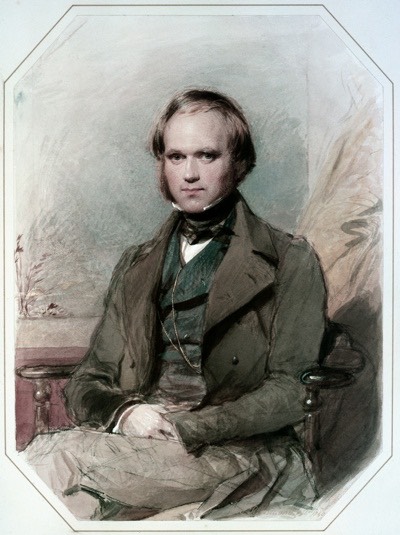by Charles Darwin
Darwin’s record of his experiences during a five-year circumnavigation of the globe clearly shows why he was one of the greatest scientists in history: he noticed things. Everywhere he went, he noticed orderly arrangement, and deviations from those patterns. His mind was deeply engaged in everything he saw; he was constantly asking the basic questions that underly all science: “How does this relate to other things? How is it different? How is it similar? How did it get to be this way?” His curiosity was catholic: he noticed geological formations, the behavior of animals, the systems of vegetation, the differences in behavior of different peoples, the weather, how the snow lies on the ground – things that would sail right by most people unnoticed.
His curiosity was founded on a thorough understanding of the state of science in his day. Never mentioned in the book but obvious to the perceptive reader is the presence of the large library he brought along with him and pored through during the long months at sea. He probably spent at least three years of the five-year journey at sea; the only diversion for a man of his intellect was study, and so, undistracted by any other concerns, he drank long and deeply of all the scientific knowledge of the day.
This huge compendium of knowledge provided the launching pad for his curiosity. He labored to reconcile his readings with his observations. Most of the time the two matched, and his experiences added depth to his understanding of his readings. But at other times what he saw didn’t quite match what he had read, and this in turn triggered intense cogitation.
We commonly associate the Galapagos Islands with Darwin and theory of evolution, but the ideas that later crystalized into his theory showed up everywhere he visited. Writing about Bahia in Brazil, he mentions a family of birds whose species he noted all over South America:
Taxonomy reveals phylogeny:
“This small family of birds is one of those which, from its varied relations to other families, although at present offering only difficulties to the systemic naturalist, ultimately may assist in revealing the grand scheme, common to the present and past ages, on which organized beings have been created.”
Competition leads to extinction:
“…it seems most probable that the North American elephants, mastodons, horse, and hollow-horned ruminants migrated on land since submerged near Behring’s Straits, from Siberia into North America, and thence, on land since submerged in the West Indies, into South America, where for a time they mingled with the forms characteristic of that southern continent, and have since become extinct.”
Past extinctions reveal the history of life:
“This wonderful relationship in the same continent between the dead and the living, will, I do not doubt, hereafter throw more light on the appearance of organic beings on our earth, and their disappearance from it, than any other class of facts… Certainly, no fact in the long history of the world is so startling as the wide and repeated exterminations of its inhabitants.”
The role of humans:
“Did man, after his first inroads into South America, destroy, as has been suggested, the unwieldy Megatherium and the other Edentata?”
Selection affects heredity:
“…first, that the wildness of birds, with regard to man, is a particular instinct directed against him, and not dependent on any general degree of caution arising from other sources of danger; secondly, that it is not acquired by individual birds in a short time, even when much persecuted; but that in the course of successive generations it becomes hereditary.”
Lastly, a quote demonstrating my point above, that Darwin’s education illuminated his curiosity:
“…as in music, the person who understands every note will, if he also possesses a proper taste, more thoroughly enjoy the whole..."

